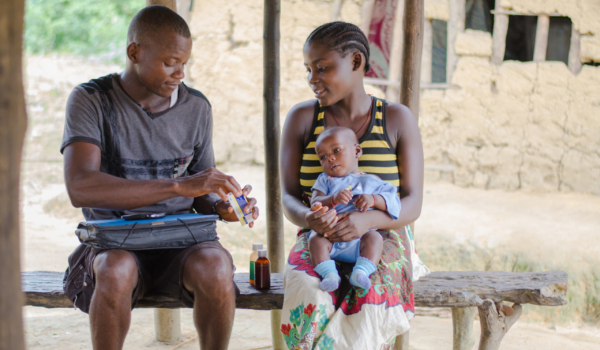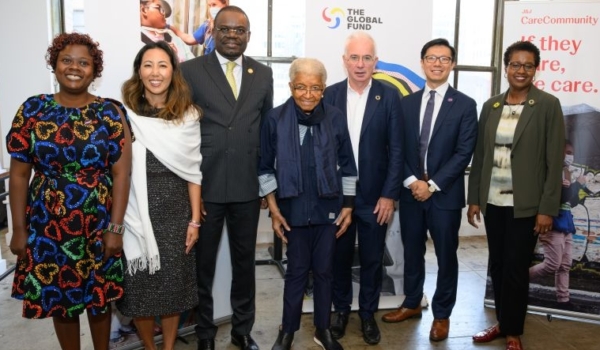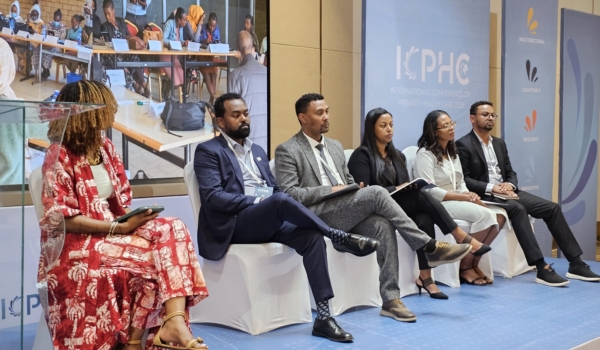By Lorenzo Dorr, County Manager for Rivercess County, Last Mile Health
A recent study published in the American Journal of Public Health by Liberia’s Ministry of Health, Last Mile Health, and researchers from Harvard and Georgetown Universities demonstrates that, in just one year, community health workers supported with medical supplies, supervision from clinic-based nurses, and monthly pay increased total treatment rates from 28.5% to 69.3% in the intervention area (while decreasing from 59.9% to 44.4% in the control area) corresponding to a 56.4 percentage point difference-in-difference in one of Liberia’s poorest and most rural regions. The results not only highlight the role community health workers play in advancing life-saving treatment for children in Rivercess County, but also underscore the potential of the Government of Liberia’s National Community Health Assistant Program to rapidly improve access to primary health care in remote communities across the country.
The complete study, entitled “A Community Health Worker Intervention to Increase Childhood Disease Treatment Coverage in Rural Liberia: A Controlled Before-and-After Evaluation” can be accessed for free at the American Journal of Public health website here.
About the Study
Rivercess County is one of the poorest and most remote counties in Liberia, and previously faced some of the lowest coverage rates for essential health services, including low rates of treatment for children. Prior to the study, less than one out of three children in remote communities in Rivercess County were receiving treatment for conditions like diarrhea, pneumonia, and fever. As the baseline component of the study notes, one of out five women “reported distance from health care provider as a barrier to receiving care.”
Following a baseline study in 2015, community health workers were hired, trained and equipped in three of Rivercess County’s six health districts to comprise the study’s intervention group. Community health workers were recruited directly from the communities they serve and trained in four modules, including epidemic disease surveillance, child health, reproductive, maternal and neonatal health, and adult health. In line with Liberia’s 2016 Revised National Community Health Services Policy, community health workers received supportive supervision by clinic-based nurses, essential medical supplies to diagnose and treat patients, and monthly pay.
The primary purpose of this study was to assess the change in the percentage of children with diarrhea, fever, or pneumonia – three of the most common child illnesses – who received treatment from a qualified care provider before and after the intervention. The research team compared the treatment of childhood illnesses in the intervention group against the control group, comprised of the three districts that did not yet have the CHW model in place, between 2015 and 2016.
The Results
What the researchers found was compelling. In 2016, the proportion of children receiving care from a qualified provider increased substantially in the intervention group for diarrhea, malaria, and pneumonia. Specifically, total treatment rates increased from 28.5% to 69.3% in the intervention area, and decreased from 59.9% to 44.4% in the control area, which corresponds to a 56.4 percentage point difference-in-difference. This means that investing in supervision, compensation, and supply chain support for community health workers – as part of primary health care systems – led to statistically significant increases in access to treatment for children with pneumonia, diarrhea, and fever/suspected malaria in just 12 months. Additionally, the proportion of mothers reporting distance as a barrier to care was cut by more than half in the intervention area.
Remarking on the results of this study, Derry Duokie, Assistant Director for the Community Health Services Division at Liberia’s Ministry of Health, said, “With the available evidence we can and we must sustain the gains we have made and further expand the program through flexible partnership and promoting country ownership of the program for the benefit of our most vulnerable populations.” Notably, Duokie is a co-author of this study and is the former Community Health Department Director of the Rivercess County Health Team.
To reach 100% coverage for essential child health services, the data also demonstrated that additional interventions at the community-level alongside efforts to continue to strengthen the program are necessary. Addressing gaps in quality will continue to be a critical focus, as advancing quality of care is essential to advancing the right to health.
What This Means for Primary Health Care in Rural Liberia
This isn’t just good news for Rivercess County. Rather it’s an important story for the wider initiatives to strengthen community and primary health systems across rural Liberia.
Findings from Rivercess County highlight the potential for impact of the Government of Liberia’s National Community Health Assistant Program, which was launched in 2016 following the West Africa Ebola epidemic, to hire, train, and equip over 4,000 community health workers and 400 clinical supervisors (primarily nurses) to provide 1.2 million Liberians living in remote communities with life-saving access to care. First, the study provides critical evidence demonstrating the effectiveness of the National Community Health Assistant Program to increase coverage of essential health services and treatment of children and their families in the hardest to reach areas. Second, the study reaffirms results from studies in other counties, including Konobo District in Grand Gedeh County, showing how enhanced compensation, training, supervision, and supply chain support to community health workers can improve access to child and maternal health services. Finally, the findings in the study complement the results reported in Liberia’s 2017 Annual Integrated Disease Surveillance and Response Bulletin, which documented the impact of community health workers in improving the early detection of epidemic diseases, like measles and lassa fever, across the country.
Liberia is asserting a bold example of what is possible when governments and their partners make meaningful investments in inclusive community health systems. As Minister of Health Dr. Wilhelmina Jallah, Deputy Minister of Health Dr. Francis Kateh, and Last Mile Health CEO Dr. Raj Panjabi wrote in an op-ed in the British Medical Journal in May 2018, “paying and investing in CHWs isn’t just the right thing to do; it’s the smart thing to do to accelerate universal health coverage.”




